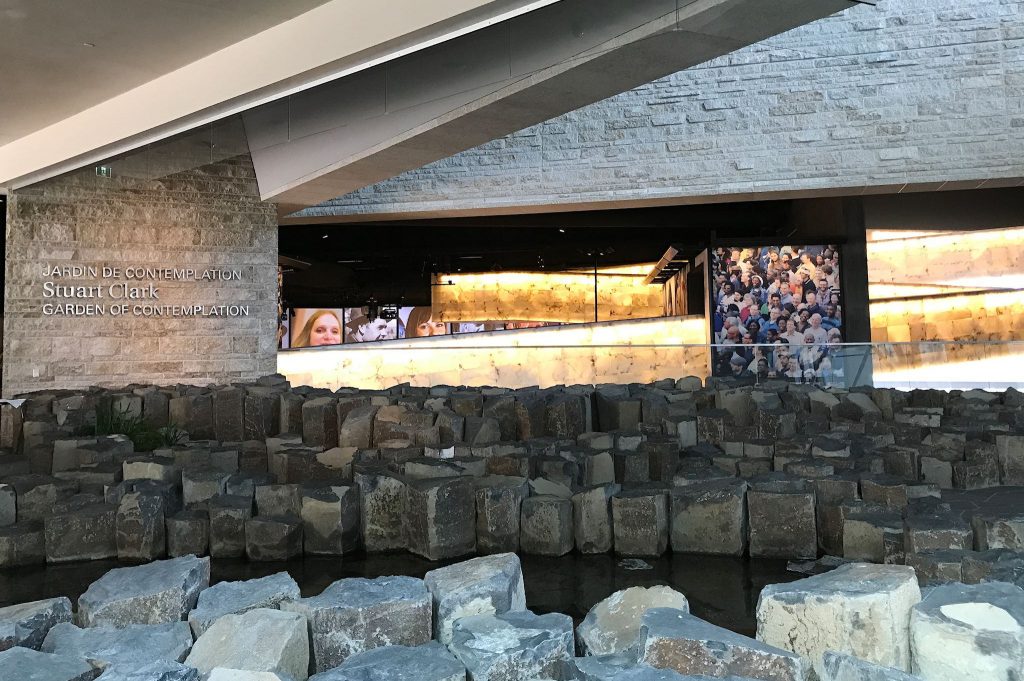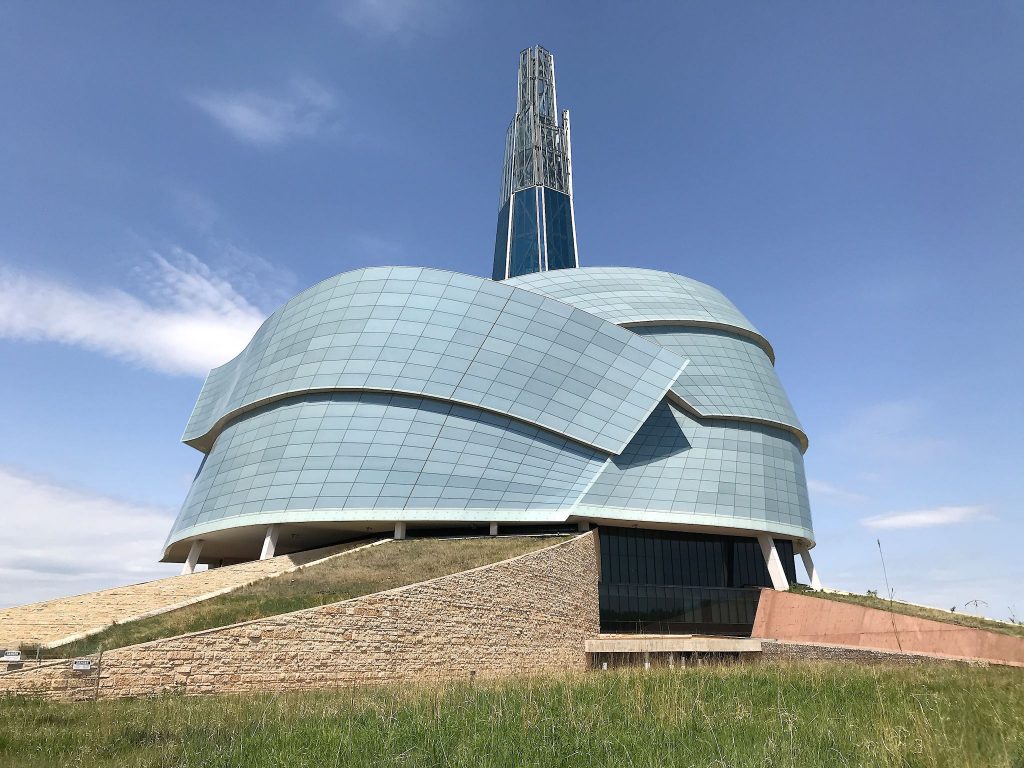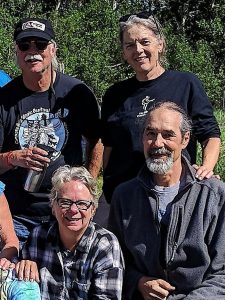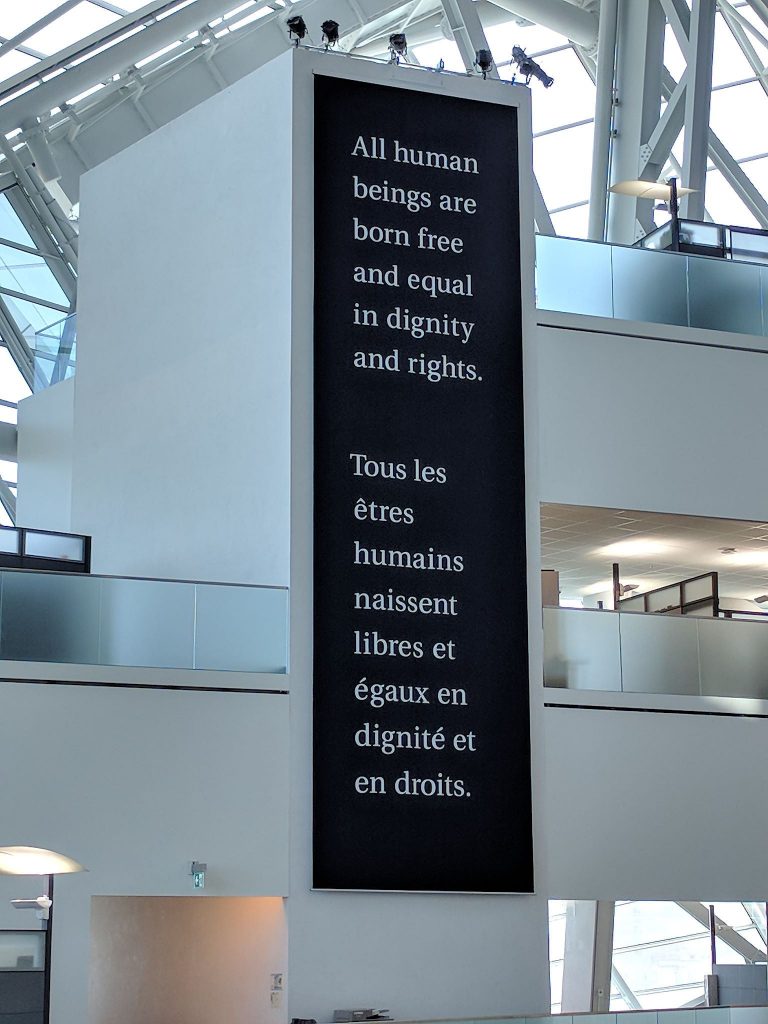Just about everyone we talked to about Winnipeg suggested we stop to visit the Canadian Human Rights Museum. That’s more than enough reason for us to make a stop. In order to get to the Prairie Wind Music Festival last week, though, we needed to drive on through Winnipeg (with a quick stop to pick up a part for our truck) and return to Winnipeg after visiting Riding Mountain National Park. Fortunately our return trip took us through Minnedosa.
Our new friends from the festival, Rich and Leslie, live there and invited us over for brunch on our way to Winnipeg. We got along well at the festival, and figured out why within 30 seconds of entering their home… The kitchen featured a gorgeous poster of the Beatles, and there was Beatles paraphernalia mixed with exotic travel momentos all over the house. They’re hard core music fans (which we knew already, but the reinforcement was good!). We had a wonderful brunch while we shared travel stories, enjoyed great conversations about social issues (they’re both retired social workers) and similarities and differences between our respective countries, and generally got to know each other a bit better. Perhaps some June we’ll meet up at the Montreal Jazz Festival…
From there, it was on to Winnipeg where the Human Rights Museum did not disappoint… Unlike the US, which has yet to pass an Equal Rights Amendment (ok, we’ve been working on one for 97 years), Canada included the Charter for Human Rights in their Constitution in 1982 and they’ve built this museum as a commitment, celebration and review of the history of human rights, both in Canada and worldwide. The largest gallery in the museum demonstrates both the missteps and progress that have been made in extending human rights to all through exhibits, works of art and short film. Other galleries lay out the evolution of laws to protect rights, the effects of secrecy and denial and the impacts of breaking the silence on human rights violations, and Canadians taking action to make a difference in human rights. Throughout the museum were interactive kiosks, at the appropriate distance from the floor, with age appropriate questions directed toward children, teens and grown-ups to inspire thought. For example, what are the implications on rights of physician assisted suicide for terminally ill humans and why? (Grown-up question…)

In addition to the galleries, the architecture itself was a celebration of diversity. The glass steeple (with sweeping views of Winnipeg!) represents the glacier that formed most of Canada, while the blue outer shell represents clouds. The stone wall represents the mountains of Canada while the exposed internal frame of the building represents the roots of a tree. Inside is a contemplation garden made of stone which mixes basalt from Mongolia and Tyndall limestone from Garson, Manitoba with a clear view of the ramps throughout the museum made of translucent white alabaster from Spain and representing circulation throughout the structure. When the structure was being built, based on the recommendations of Indigenous elders, medicine bags were dropped into the holes when drilling for pilings to show respect for the earth.
We give Canada a grand cheer for giving this priority to human rights.
For anyone who’s interested, more Winnipeg pix…





Wow!!! Nice compliments you two!!! Was great to have you visit. So glad the museum exceeded your expectations. We are pretty proud of it.
See you in Montreal!!!
Thanks Leslie!
We talked to Jan yesterday. We’ll meet up in Flin Flon later this week and get to see a show at Johnny’s.
Yup. Montreal’s on the list!
Give Greg & Jan a hug from us & have a good time in the Flon 🙂
We will! Thanks!